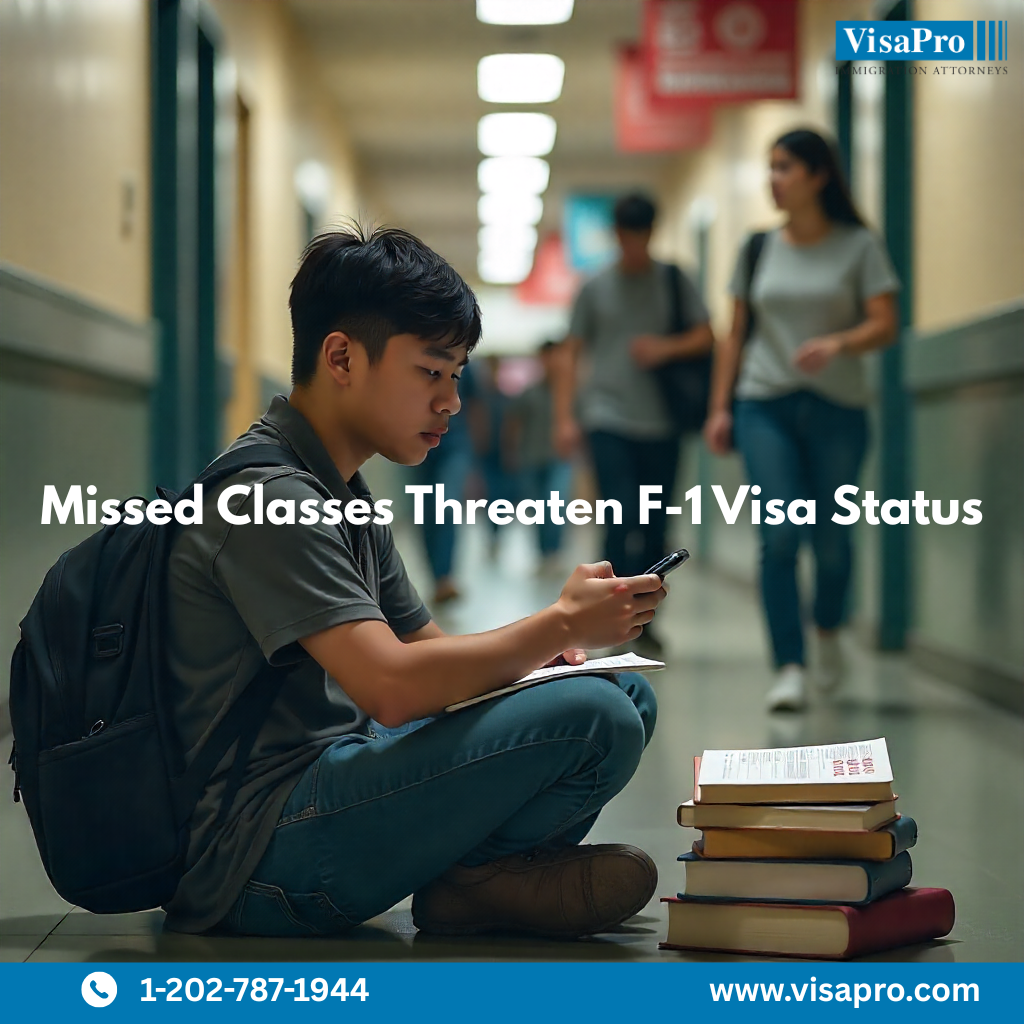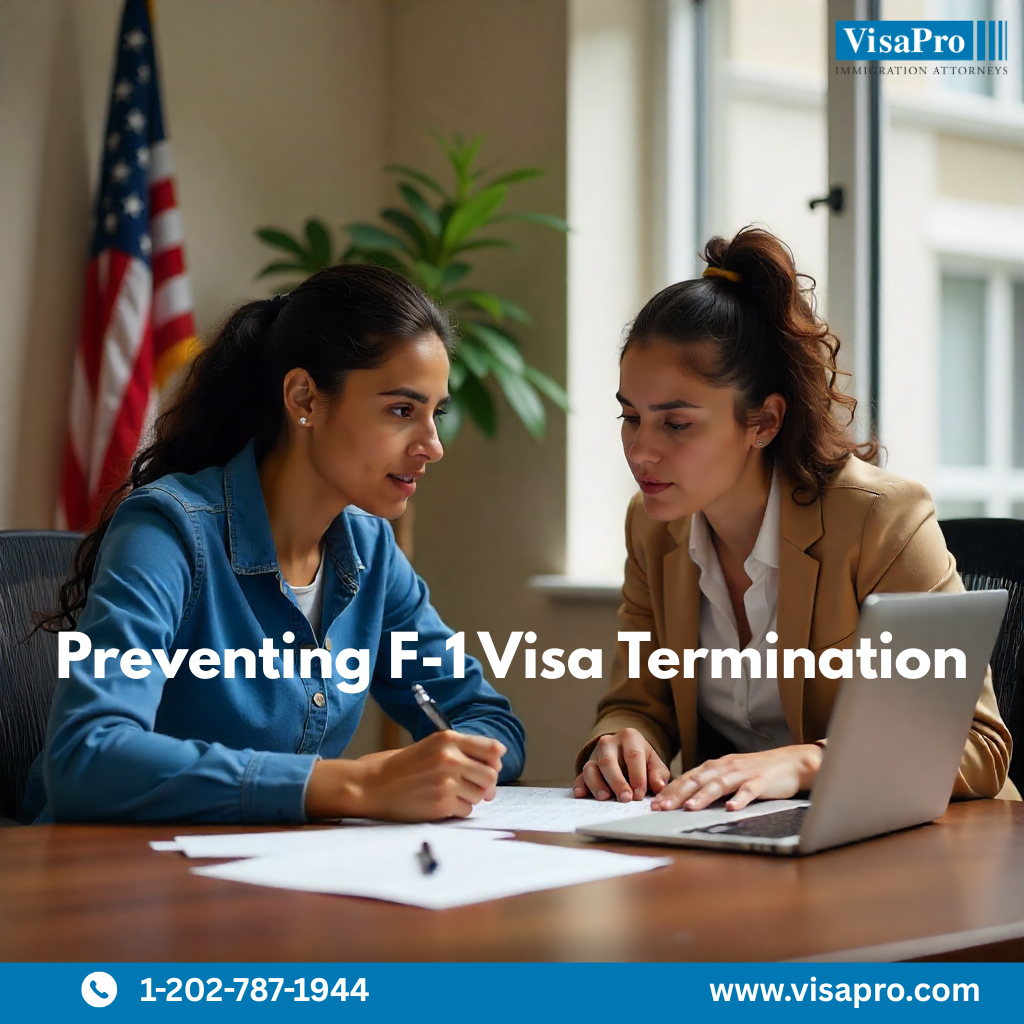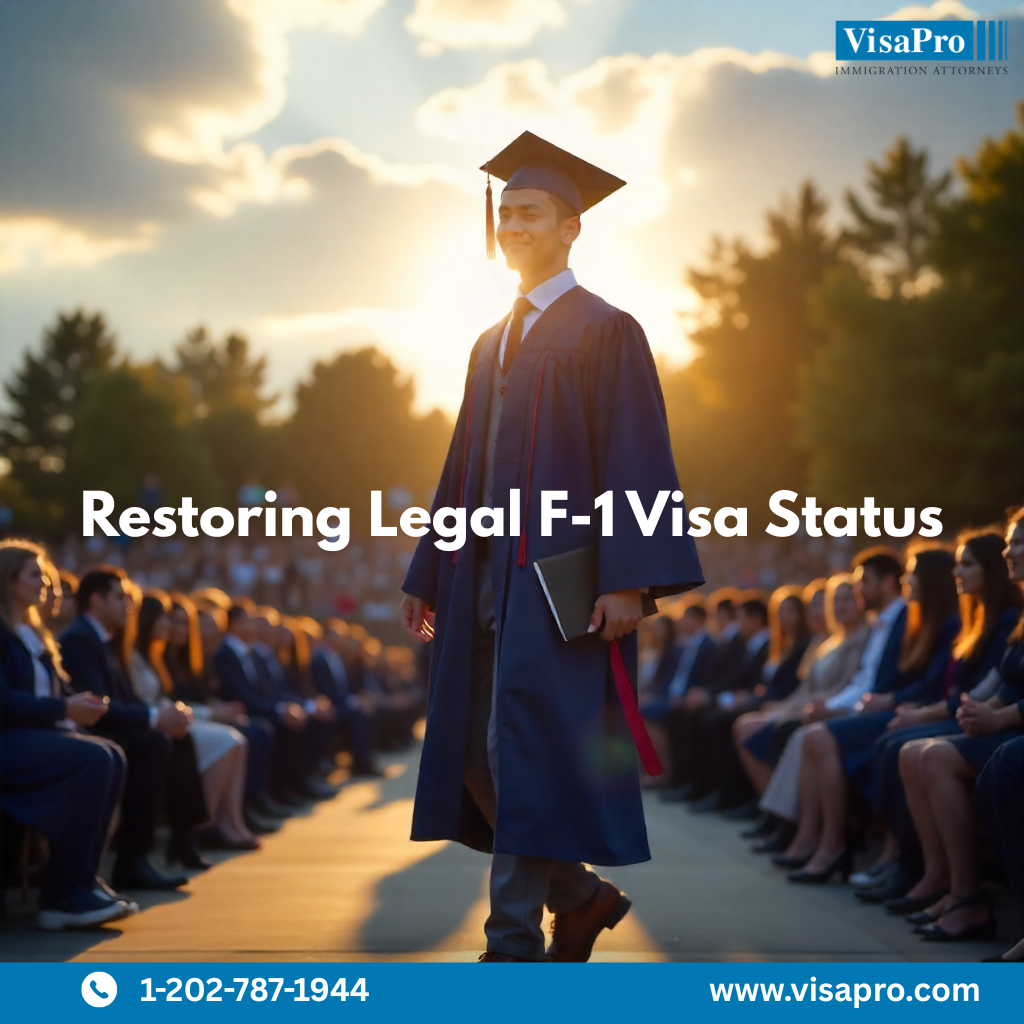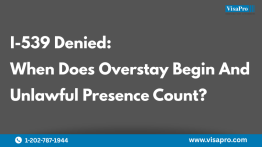Quick Summary:
If you’ve entered the U.S. on an F-1 visa but are now considering skipping classes to pursue a job opportunity or a different course – STOP! Your status could already be at risk. This guide explains what you can and can’t do on an F-1 visa, how to fix an F-1 status violation, and how to legally switch to a work visa like H-1B.
Understanding What Happens If You Don’t Attend School on an F-1 Visa
If you enter the U.S. on an F-1 visa but don’t attend classes, you are violating your visa.
Your F-1 visa is tied directly to the academic institution listed on your Form I-20. The moment you fail to begin or maintain full-time enrollment, you are no longer in valid F-1 status. You cannot simply “wait out” your time in the U.S. to apply for an H-1B next April. The consequences of an F-1 status violation can include removal proceedings, or denial of future visas.
Real Scenario:
A student from India arrived in the U.S. on October 16. Classes were scheduled to start on October 27, but they decided not to enroll, hoping to later apply for an H-1B through a tech startup. Within days of missing classes, the school terminated their SEVIS record, triggering loss of status.
If this sounds like your situation, don’t panic, but act fast. You may have limited legal options to get back into valid F-1 status, switch schools, or change to another visa.
Why Attending Classes is Mandatory on F-1
You must attend the school listed on your I-20 full-time to maintain valid F-1 visa status.
The F-1 visa is not a general-purpose entry visa, it is a student visa. Your visa was approved based on a specific academic plan, and U.S. immigration law requires you to stick to it. Skipping classes or switching programs without authorization violates the terms of your visa and can lead to immediate termination of your SEVIS record.
What You Must Know:
- Your SEVIS record is monitored: If you don’t attend classes, your Designated School Official (DSO) is required to report this.
- Once your SEVIS record is terminated, you’re no longer in legal F-1 status, even if your visa is still physically valid.
- Case Example:
A Pakistani student who missed orientation and failed to check in with their DSO was reported as a “No Show.” Even though their visa stamp was valid for five years, they were out of status. The student was put into expedited removal proceedings and later deported.
Do’s:
- Attend all classes or speak with your DSO before making changes
- Transfer to a new school through official procedures before dropping out
- Explore other legal visa options immediately if you no longer want to study
Don’ts:
- Do not skip school thinking you can later “fix it”
- Do not begin working while out of status
- Do not stay in the U.S. hoping for a future H-1B without legal status
Can You Work on an F-1 Visa Without Attending Classes?
No, unauthorized employment on an F-1 visa is a serious violation and can lead to removal and future visa denial.
F-1 visa work rules are strict. You may only work under very specific conditions – none of which apply if you’re not attending school or your SEVIS record is inactive. Accepting any job, paid or unpaid, without proper authorization is considered unauthorized employment under F-1 visa regulations.
What The Law Says:
- You may work on-campus (max 20 hours/week) while enrolled
- You may apply for CPT or OPT, but only after meeting eligibility through school attendance
- Freelancing or contract work, even online, is not allowed without proper work authorization
Example Violation:
A student started working for a tech startup remotely while waiting for an H-1B. Because their F-1 was inactive and they had no work authorization, USCIS later denied their change of status request and flagged their record for unauthorized employment.

Can I Just Wait Until March and Apply for H-1B?
No, you must be in valid immigration status to change to H-1B within the U.S., and the petition must be filed by a qualifying U.S. employer.
You cannot file Form I-129 to switch from F-1 to H-1B on your own. The H-1B process requires employer sponsorship, getting picked in the lottery, and being able to show valid status on the date of filing continuing to October 1. If you’ve already violated F-1 status, your only legal path may be to depart the U.S. and reenter after consular visa approval, if eligible.
H-1B Key Facts:
- The H-1B lottery happens in March each year
- The employer must file a petition (Form I-129), not the student
- You must be in status at the time of filing or risk denial
Case Example:
A Korean student overstayed on F-1 and was later selected in the H-1B lottery. USCIS denied the change of status request due to the status violation, requiring them to leave the U.S. for consular processing.
How To Fix A Violation of F-1 Status
To restore status, you must act quickly. Options include reinstatement, transfer, or changing status through a new visa.
If your SEVIS record is terminated, you may apply for F-1 reinstatement via Form I-539. This process does not guarantee approval. USCIS requires strong evidence that your violation was due to circumstances out of your control. Reinstatements must generally be filed within 5 months of SEVIS termination, except in exceptional circumstances. Alternatively, a timely school transfer before your SEVIS is terminated may preserve your status if your SEVIS record is still active.
Options Checklist:
- Still in school and SEVIS active? Talk to your DSO and transfer immediately
- SEVIS terminated, <5 months? File for reinstatement ASAP
- SEVIS terminated, >5 months? File for reinstatement as long as you can show a good reason for the delay
- SEVIS terminated, unlawful employment? The reinstatement will be denied
VisaPro Tip:
Each case is different. Your best chance of success is consulting an experienced immigration attorney to guide your next steps and avoid further status problems.
Can I Transfer to Another School Instead?
Yes, if your SEVIS record is still active, you may transfer to a new school with a new I-20 before classes begin.
This is the most straightforward way to legally change your academic direction without violating F-1 status. However, you must complete the transfer within the time window, typically 60 days after completing or withdrawing from your current program, but often less if no classes have begun.
Steps to Transfer:
- Get accepted to the new SEVP-approved school
- Request a SEVIS transfer from your current DSO
- Receive a new Form I-20 from the new school
- Enroll and attend classes as per the new program
Note: Transfers to a new school, especially immediately after entry on the F-1, may be flagged for indications of immigration fraud.
Case Example:
Frank from Ireland obtained an F-1 visa to attend a prestigious university in the U.S. Despite not having strong evidence of ties to his home country, the consular officer issued the visa on the basis of his academic record and admission to the world-renowned institution. Immediately upon entering the U.S., Frank transferred to a much less expensive community college. His subsequent application for a new F-1 visa was denied as the consulate accused Frank of lying about his intent to attend the prestigious university.
Conclusion: You Must Act to Stay Legal
If you entered the U.S. on an F-1 visa and didn’t attend classes, you’re at serious risk of being out of status. Staying in the U.S. without taking immediate legal steps, like transferring schools, applying for reinstatement, or changing to a different visa, can put your future at risk.
You can’t just “wait until H-1B season” or work without authorization. But with the right guidance, there are legal ways forward.
Need help understanding your best next move?
Schedule a free assessment with VisaPro’s trusted immigration attorneys today. We’ve helped thousands of students protect their future, and we can help you too.
Frequently Asked Questions (FAQs)
1.Can I work while studying on an F-1 visa?
Yes, but only under specific conditions like on-campus jobs (up to 20 hours/week) or through CPT or OPT after meeting eligibility requirements. Unauthorized work is a violation of F-1 visa rules.
2.What happens if I don’t attend classes on an F-1 visa?
If you skip or withdraw from classes without a proper transfer or reinstatement, your SEVIS record may be terminated, and you will lose valid F-1 status.
3.Can I file an H-1B application myself while on F-1 visa?
No. An H-1B petition must be filed by a U.S. employer. You also must be in valid immigration status at the time of filing to request a change of status within the U.S.
4.What is a violation of F-1 status and how can I fix it?
Violations include not attending school, working illegally, or not maintaining full-time enrollment. You may fix it through reinstatement (Form I-539), school transfer, or exiting and reentering the U.S. with a new visa.
5.Is freelance work allowed on an F-1 visa?
No. Freelancing, gig work, or any form of self-employment is not permitted under F-1 visa work rules and is considered unauthorized employment.
Let VisaPro help you regain control of your immigration journey.
Schedule Your Free Assessment Now
What VisaPro Customers Are Saying
The US [B-1] Visa has always been a tough ride, and being denied a few times it makes it even worse. But thanks to VisaPro and their meticulous processing I was granted a Visa. I would like to thank you and all the people involved in making this a success. I would like to recommend VisaPro to all those who seek peace of mind and hassle free Visa processing.”




 Manas Bhat, Director Operations, First Houston Mortgage India
Manas Bhat, Director Operations, First Houston Mortgage India



